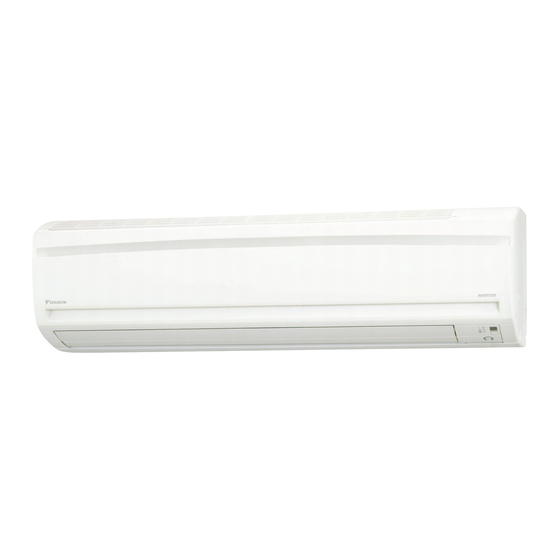
Summarization of Contents
Safety Precautions
General Warnings and Cautions
Key safety instructions and warnings regarding unit operation to prevent hazards and property damage.
Installation and Site Considerations
Site Selection and Environmental Factors
Guidelines for choosing an appropriate installation location, considering environmental conditions.
Noise, Electrical, and Relocation Guidelines
Advice on noise mitigation, electrical requirements, and professional relocation services.
Indoor Unit Component Identification
Indoor Unit Parts Overview
Detailed diagram and list of parts for the indoor unit of the air conditioner.
Outdoor Unit Component Identification
Outdoor Unit Parts Overview
Detailed diagram and list of parts for the outdoor unit of the air conditioner.
Remote Controller Overview
Remote Control Functions and Display
Explanation of the remote control's display screen and button functions for operation.
Remote Controller Setup
Installing Remote Controller Batteries
Step-by-step instructions for installing batteries in the remote controller.
Remote Controller Usage and Mounting
Remote Operation Basics and Range
How to use the remote controller effectively and its operational range.
Mounting the Remote Holder
Instructions for securely attaching the remote controller holder to a wall.
Basic Operations: Clock and Power
Setting the Unit Clock
Guide on setting the current time on the remote for timer functions.
Initial Power-Up Procedure
Steps to turn on the air conditioner by activating the main power breaker.
Operating Modes: DRY, COOL, FAN
Selecting and Starting Operation
How to choose and initiate operation in DRY, COOL, or FAN modes.
Stopping Operation
Procedures for turning the unit off using the remote control.
Operating Modes: Air Flow Rate
Adjusting Air Flow Rate Settings
Instructions for changing the fan speed settings in different modes.
Airflow Direction Control
Adjusting Horizontal Flap Position
How to control the horizontal airflow direction using the SWING button.
Adjusting Vertical Louver Position
Manual method for adjusting the vertical louvers for airflow direction.
Advanced Operation: POWERFUL Mode
Activating POWERFUL Operation
Guide to using the POWERFUL mode for rapid cooling or maximum capacity.
Timer Functions: OFF Timer
Setting the OFF Timer
Instructions for programming the unit to automatically switch off.
Canceling the OFF Timer
How to disable a previously set automatic OFF timer.
Timer Functions: ON Timer
Setting the ON Timer
Instructions for programming the unit to automatically switch on.
Canceling the ON Timer
How to disable a previously set automatic ON timer.
Combining ON and OFF Timers
Setting both ON and OFF timers for automated operation scheduling.
Care and Cleaning: General
General Unit Cleaning Procedures
Basic cleaning procedures for the indoor, outdoor units, and remote controller.
Front Panel Maintenance
Steps to safely remove, clean, and reattach the indoor unit's front panel.
Care and Cleaning: Filters
Air Filter Cleaning and Care
How to clean the main air filters and the special air-purifying filter.
Filter Replacement Guidance
Information and procedures for replacing the air filters.
Maintenance Checks and Information
Filter Performance and Ordering
Information on filter impact and how to order replacement filters.
Pre-Storage Unit Checks
Essential checks and preparation steps before storing the unit for extended periods.
Troubleshooting: Normal Operation Explanations
Understanding Common Non-Trouble Scenarios
Explanations for common events like delayed start, steam emission, odors, or fan rotation.
Addressing Operational Interruptions
Explanations for sudden stops, fan rotation during non-operation, and system protection.
Troubleshooting: Problem Diagnosis and Solutions
Unit Not Starting or Poor Cooling
Checks to perform when the unit does not operate or cooling is insufficient.
Operation Malfunctions and Error Indicators
Steps for diagnosing and resolving issues like flashing lights or abnormal operation.
Emergency Procedures and Professional Maintenance
Critical Service Actions and Warnings
Critical situations that require immediate attention from a service technician, including warnings.
Post-Power Failure and Lightning Precautions
Guidance on unit behavior after power loss and precautions during thunderstorms.
Recommended Periodic Professional Maintenance
Importance of professional maintenance for long-term unit health and performance.













Need help?
Do you have a question about the FT60FVM and is the answer not in the manual?
Questions and answers